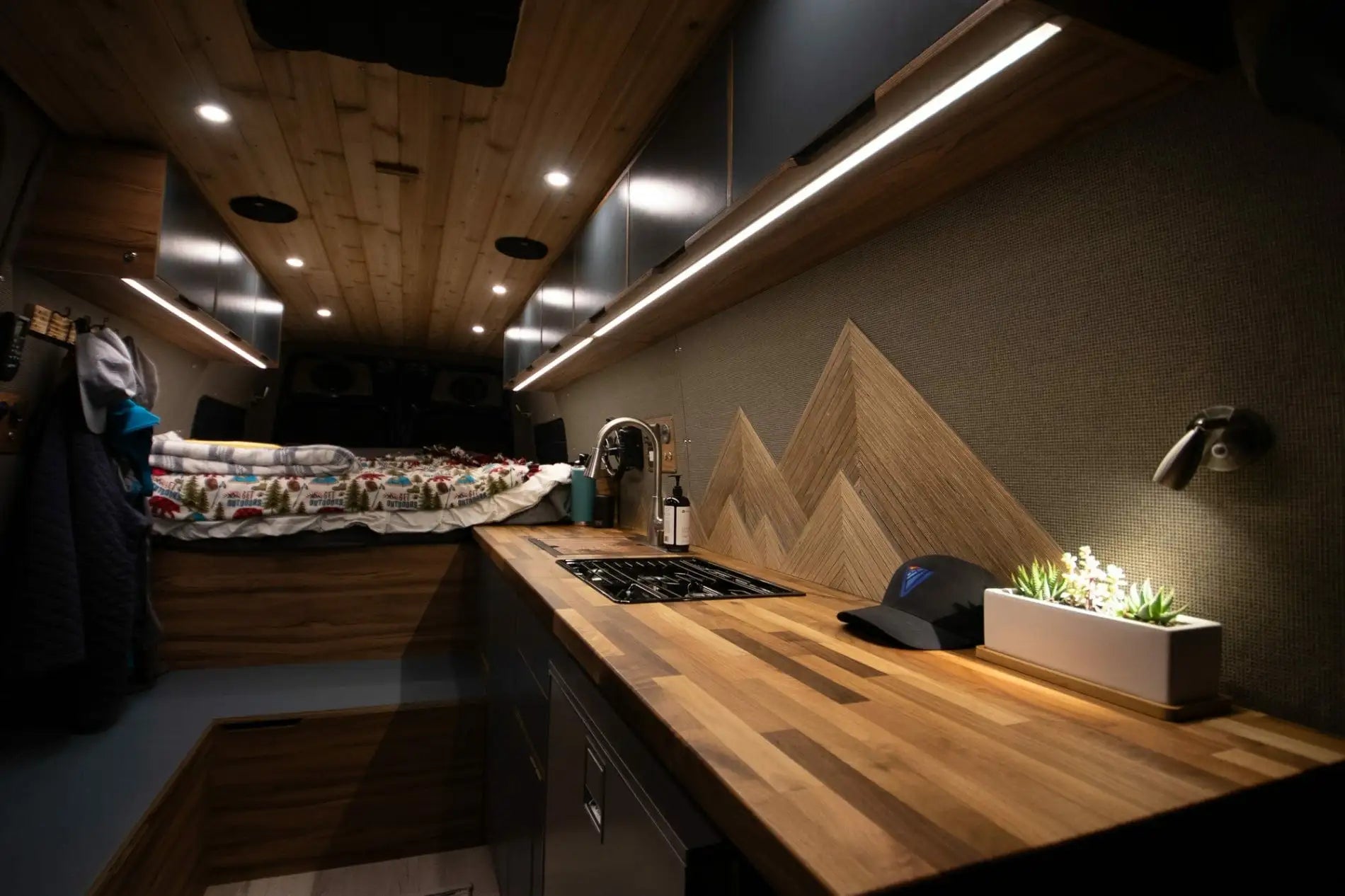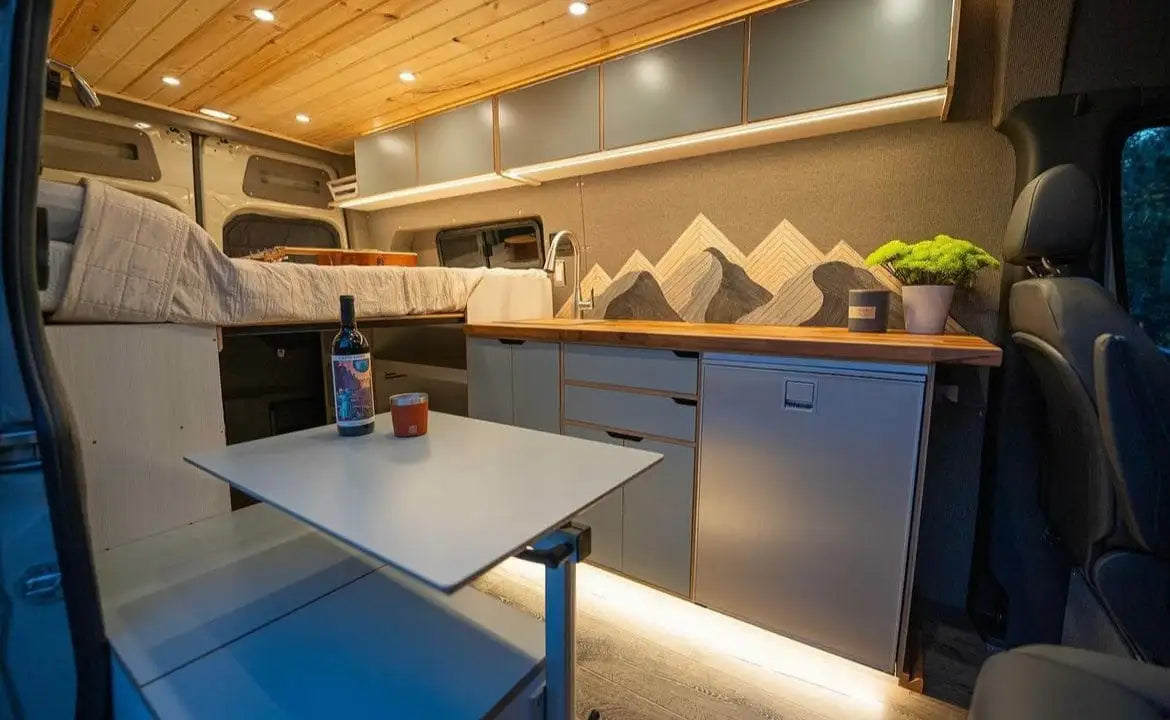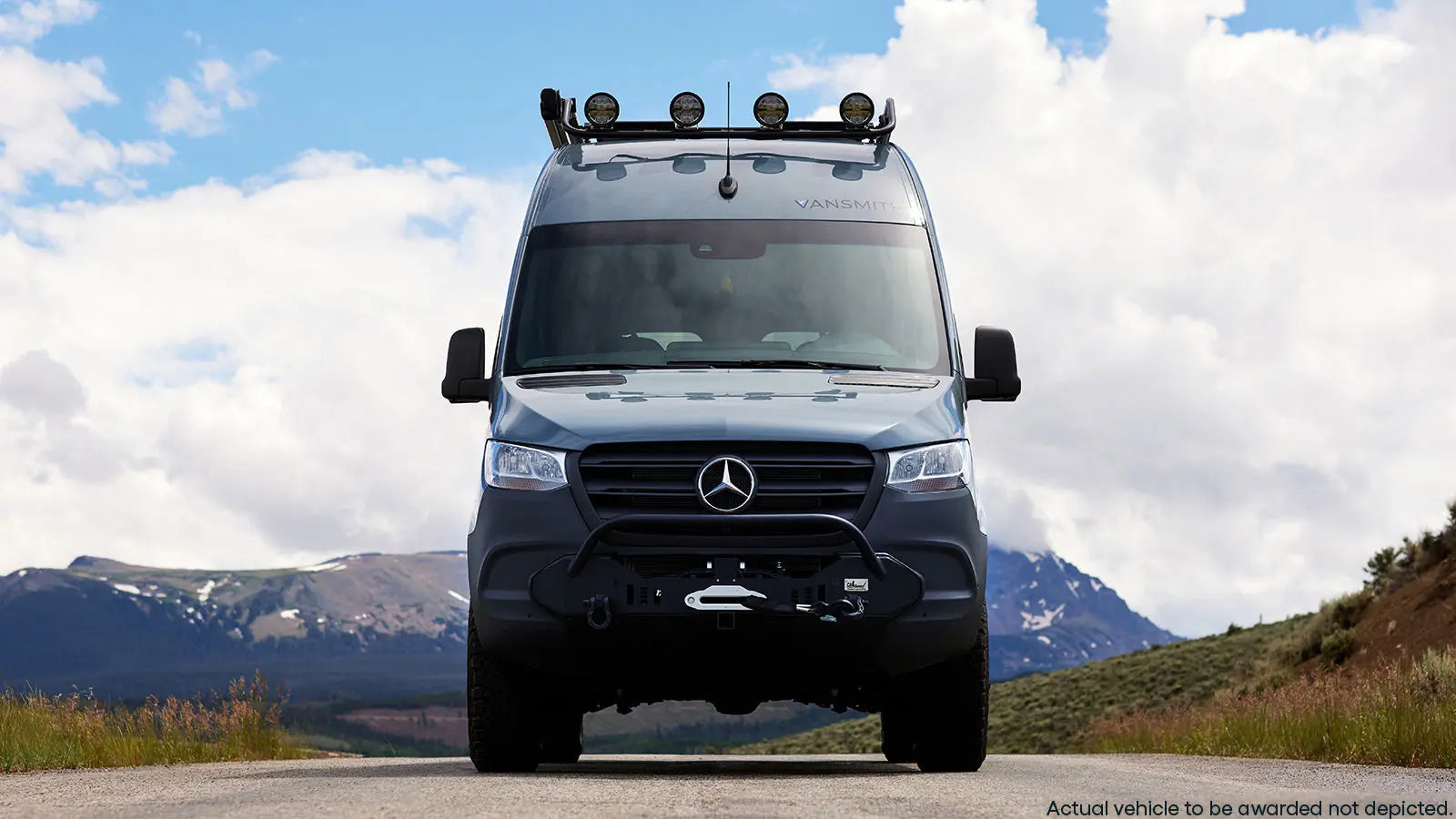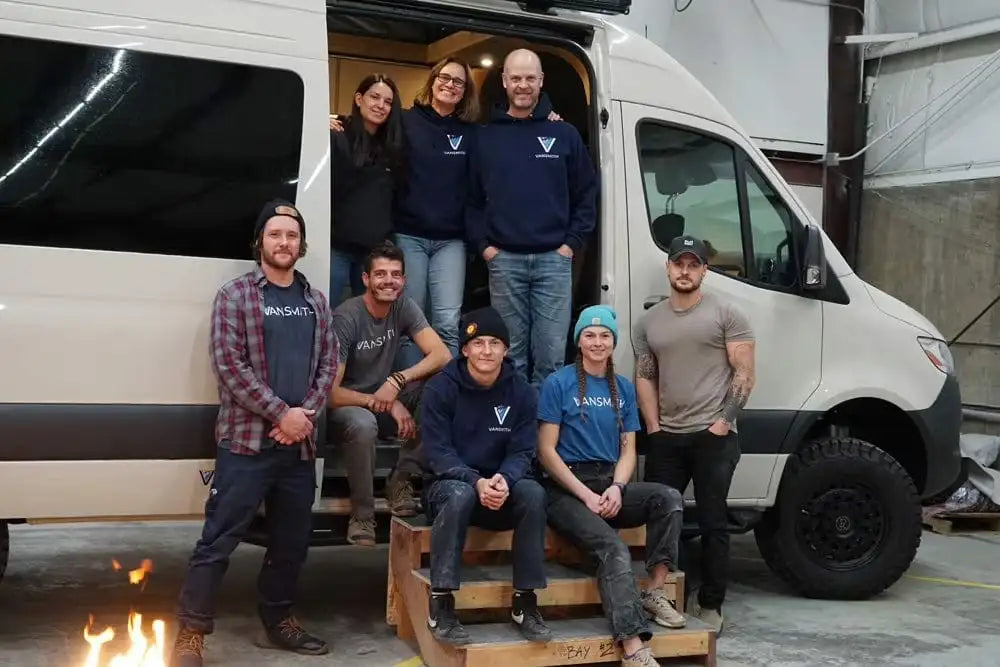Why the electrical system matters (and how to think about it)
Your van’s electrical system is the heart of a comfortable, independent build. It determines whether your fridge stays cold after a cloudy day, whether you can work from the road, and how long you can boondock between hookups. A solid system balances batteries, charging sources (alternator, solar, shore power), distribution, and monitoring—so that power is predictable and safe, not guesswork.
If you want a deeper primer on components and basic wiring layouts, see our full explainer on how to power your van: How to Power Your Van: Solar, Batteries & Electrical Explained.
How a modern van electrical system works
At a glance, most campervan electrical systems connect three energy sources to a single “house” battery bank: (1) the alternator while driving, (2) solar on the roof, and (3) shore power when plugged in. A fuse/fuse block, bus bars, and distribution panel route power to loads: fridge, lights, water pump, heater controls, inverters, and USB/12V outlets. Monitoring and safety components—fuses, circuit breakers, battery monitor, and a properly rated BMS on lithium packs—keep it reliable.

Core components (short list)
- House battery bank (AGM or LiFePO4)
- DC-DC charger or alternator isolator
- Solar panels + MPPT charge controller
- Inverter (pure sine) if you need AC
- Fuse blocks, bus bars, shore-power converter/charger
- Battery monitor and smart gateway (Bluetooth/Wi‑Fi)
Choosing batteries: AGM vs LiFePO4 (what we build with)
Battery choice defines weight, usable capacity, charging behavior, and lifecycle cost. AGM is lower upfront and tolerant of cold-start conditions, but it’s heavy and you get only ~50% usable capacity safely. LiFePO4 costs more initially but gives 90–100% usable capacity, far greater cycle life, and much lower weight—an important consideration on Sprinter and Transit platforms.
For most two-person builds that value off-grid days and long-term ownership, we default to LiFePO4 for its predictable performance and longevity. If you’re unsure which chemistry fits your plan, our guide on the best battery for camper vans walks through capacity, weight, and budget trade-offs: Best Battery Capacity & Setup for Van Life.
Charging while driving: DC-DC chargers vs. isolators
Charging from the alternator is one of the most important—and sometimes least-understood—elements of a van system. Simple alternator isolators let two batteries share charge but can’t manage charge profiles, and they sometimes cause undercharging or strain to your vehicle’s electrical system. Modern DC-DC chargers (we commonly use Victron Orion-Tr Smart series) provide multi-stage charging, protect the starter battery, and safely support LiFePO4 banks.
Choose a DC-DC charger sized to the battery bank: 30–50 A units are common for 200–400 Ah LiFePO4 systems. If you plan long highway days or frequent overlanding, investing in a high-quality DC-DC charger is worth it for faster, safer charging and less maintenance on both vehicle and house batteries. For more on parts and trusted suppliers, see the manufacturer specs and vendor pages (external): Victron Energy.
Sizing solar and building an energy budget
Solar sizing starts with an honest energy audit: add up fridge draw, lights, pump, phone/laptop charging, and any AC loads. A typical low-power two-person setup often targets 200–300 Ah LiFePO4 and 300–500 W of roof solar to comfortably recharge daily in good sun. If you want a tool to walk through sizing, read our solar sizing guide: How Much Solar Do You Need for Van Life?.
Practical tips: orient real use (not theoretical maxs), allow for cloudy days with a margin (we use ~30%), and prefer MPPT controllers for efficiency. For limited roof space on curved Sprinter roofs, flexible panels or higher-efficiency cells help capture more power without bulky racks.
Distribution, monitoring, and safety—what we won’t skimp on
Good power design is more about systems than parts. Proper cable sizing, correctly rated fuses at both ends of each run, bus bars for neat distribution, and a reliable battery monitor (Victron BMV or SmartShunt + Cerbo GX) are essential. Monitoring gives you state-of-charge, consumption trends, and alerts—so you avoid surprises in the field.
We also emphasize UL-listed components where possible, tidy installations with service loops and access panels, and clearly labeled circuits. These details matter when you’re troubleshooting remotely or selling the van down the road.
Platform specifics: Sprinter vs. Transit considerations
Not all vans are created equal. Sprinter and Transit roofs, chassis mounting points, and electrical access panels differ enough that wiring routes, battery box placement, and roof rack choices change per platform. For example, Sprinters often push flexible solar to maximize curved roof area; Transits can accommodate larger battery boxes in long-wheelbase layouts. Layout decisions should be made early so systems and cabinetry work together—our builds are planned with those platform constraints in mind.
Ready to spec a van electrical system that matches your adventure?
Talk with our designers—see realistic battery sizes, DC-DC choices, and solar layouts that fit Sprinter and Transit builds: Start the conversation with The Vansmith.
Common problems we fix in the shop (and how to avoid them)
- Undersized alternator charging—use a DC-DC charger or larger alternator where needed.
- Parasitic loads from poorly labeled circuits—install a main battery cut-off or relay.
- Over-complicated panels—centralize monitoring and use a single smart gateway where possible.
- Poor cable routing causing noise and corrosion—route with grommets, loom, and access panels.
Conclusion: design for the life you want to live, not the specs on paper
Electrical systems should be tailored: if you plan long remote trips, choose a larger LiFePO4 bank and robust DC-DC charging. If weekend escapes are the plan, a lighter AGM or smaller Li battery with modest solar may be enough. Above all, design for predictability—proper fusing, monitoring, and serviceable installs make your system last and keep you on the road.
For builds that balance craftsmanship and performance, The Vansmith pairs platform-aware engineering with proven component choices to deliver a system that’s quiet, efficient, and reliable. Learn more about how we design systems for Sprinter and Transit builds in our shop overview: Why The Vansmith is Colorado’s Premier Van Conversion Company.
Frequently Asked Questions
-
How does a van electrical system work?
A modern campervan system uses a house battery bank charged by the alternator (via DC-DC charger), solar (MPPT controller), and shore power (AC‑to‑DC converter). Distribution is handled through fuse blocks and bus bars; monitoring and correct fusing ensure safety and reliability. -
What size battery do I need for a van build?
Size depends on daily amp-hour draw. Tally your fridge, lights, pumps, and devices; add a 30% margin. Typical two-person low-power builds use ~200–300 Ah LiFePO4 (or 300–400 Ah AGM) to allow a couple of off-grid nights without solar. -
Can I charge my van batteries while driving?
Yes. We prefer DC-DC chargers because they provide regulated multi-stage charging and protect the vehicle’s electrical system. They’re safer than simple isolators, especially for lithium banks. -
Do I need an inverter?
Only if you plan to run AC appliances (hair dryer, induction cooktop, some laptops). For most USB and 12 V devices, run directly from the house battery with DC chargers to save power and complexity.





